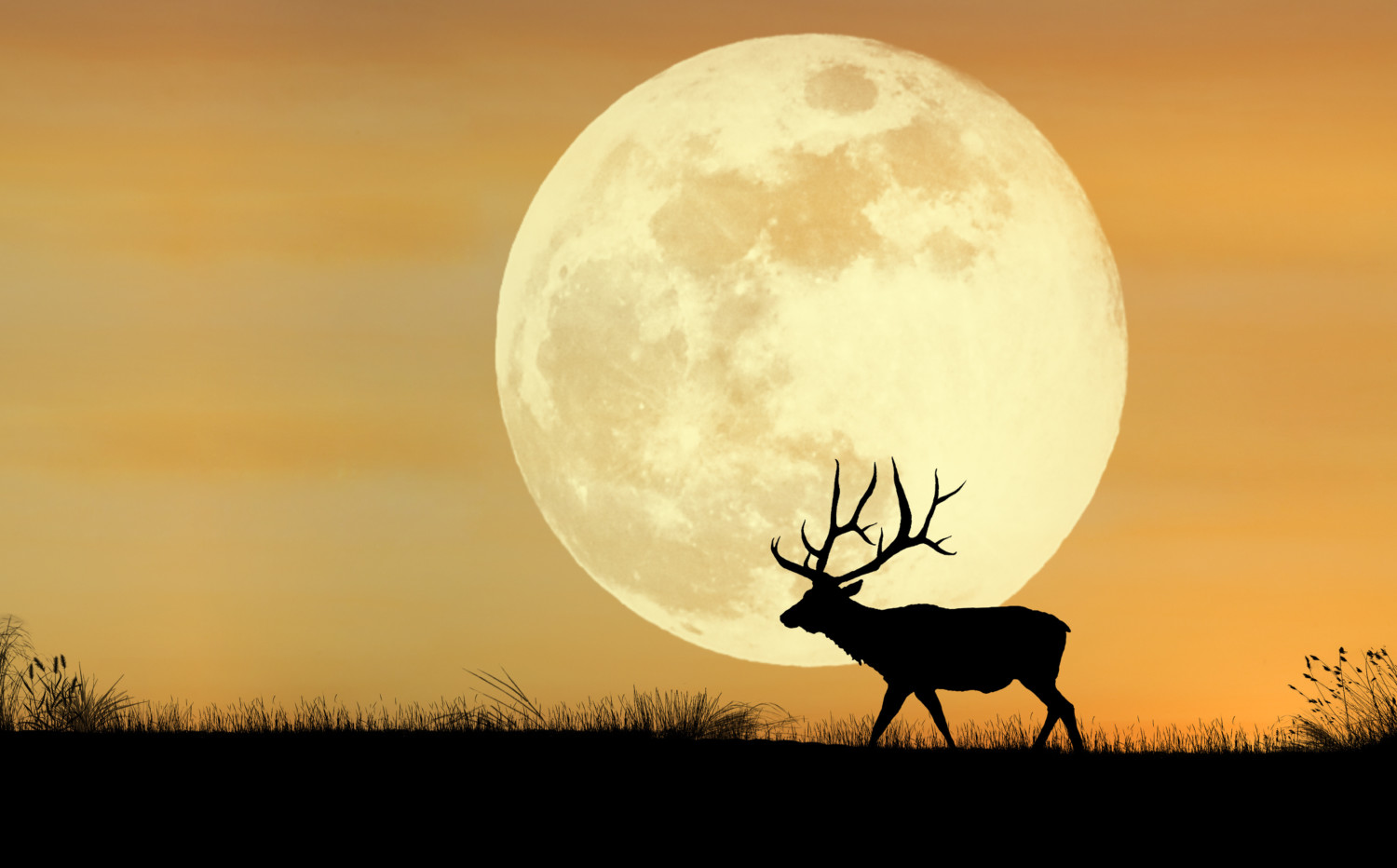The Old Farmer’s Almanac has been naming full moons using Native American, Colonial American and European sources for nearly a century. Although the full moon name was traditionally applied to the entire lunar month, we have come to use them to describe the moon during that period.
In July, the full moon is called the Buck Moon. It was named this by the Algonquin tribes, as male deer’s antlers are in full growth mode during this time. The Cree called it the Feather Moulting Moon, the Tlingit referred to the Salmon Moon, and Europeans called it the Hay Moon or Mead Moon because it was a time for harvesting hay and brewing mead.
But no matter what you call it, July’s full moon is one to watch for this year — even though it’s not a supermoon.

The reason this moon is of special interest is its color. Experts predict that the Buck Moon might appear to have a reddish-orange hue this year. That is not the traditional color of the moon this month, nor is it the result of an eclipse. Instead, this phenomenon would be the result of wildfires.
Monstrous wildfires are burning across Oregon, California, Arizona and other western states right now. Strong winds are carrying heavy smoke from the fires across the country. Though the fires are in the west, the eastern part of the country has been experiencing colorful sunrises and brightly tinted moonrises because of the ongoing haze from the fires. (You can see where the smoke is at any time on AirNow’s smoke map.)
Scientists expect the smoke to give this month’s full moon an intense orange glow. You can see an example in this Twitter post.
“Thick smoke in New York City turned the moon orange overnight,” WeatherNation tweeted. “Particulate matter from smoke scatters visible light waves, which leads to more prominent red and orange colors.”
Thick smoke in New York City turned the moon orange overnight. Particulate matter from smoke scatters visible light waves which leads to more prominent red and orange colors. Air quality is expected to improve some today, but will still be unhealthy for sensitive groups. #NYwx pic.twitter.com/gixb4LamVy
— WeatherNation (@WeatherNation) July 21, 2021
To check out the full Buck Moon, look for it towards the southeast. It will rise over the horizon after sunset on July 23 and reach peak illumination at 10:37 P.M. Eastern Time.
This story originally appeared on Simplemost. Checkout Simplemost for additional stories.


